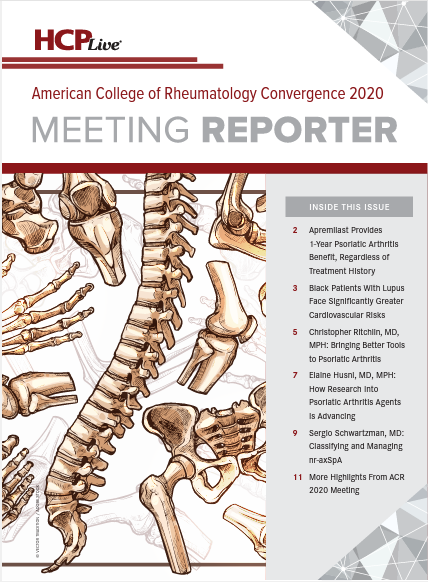Publication
Article
Supplements
Methotrexate Use Linked to Greater Tuberculosis Risks
Author(s):
The common rheumatic drug was found in a cohort analysis to be linked to greater regional TB outbreaks.

Tuberculosis screening among patients receiving methotrexate in high-risk areas is a greatly unmet need in public healthcare.
In a new assessment presented at the American College of Rheumatology (ACR) Convergence 2020, investigators from North America reported that methotrexate—a staple of rheumatic disease care and a driver of cell-mediated immunity interruption—was associated with greater regional tuberculosis cases.
The systematically reviewed findings could help experts identify rheumatic patients in key regions of greater tuberculous outbreak risks, and help them make more informed prescribing decisions based on such risks.
Investigators, led by Carol Hitchon, MD, Associate Professor of Medicine at the University of Manitoba, sought to provide a comprehensive review of available data on associations between tuberculosis rates and prescribed weekly methotrexate <30 mg.
As Hitchon noted, tuberculosis is endemic throughout regions of the world including Africa, and guidance is needed to understand the role of compromising therapies including methotrexate.
“Existing guidelines do not address the possible increased risk of tuberculosis in these areas,” she said in a statement. “As one step in developing recommendations for the use of methotrexate intended for these areas, we wanted to review the literature on methotrexate use, and the incidence and new diagnosis of TB in people taking methotrexate.”
Hitchon and colleagues’ systematic review included assessment of 4 different databases for related studies involving methotrexate and tuberculosis, published between January 1990 – May 2018. Their search included 4707 reports, which were screened independently by 2 reviewers for the diagnosis of tuberculosis in patients taking methotrexate. They extracted data on TB incidence (new diagnosis vs latent reactivation) and patient outcomes.
Their final assessment included 31 studies that met criteria: 8 cohort, 7 case-control, 1 clinical trial, and 15 case reports/series. Just more than one-fourth (27%) reported data from low-to-moderate human development index countries. Most case-control studies demonstrated a modest increased risk of tuberculosis with methotrexate, while 5 cohorts reported tuberculosis incidence rates in rheumatic disease ranging from 102 – 367.9 per 100,000 patient-years—indicating generally higher rates than comparator populations.
A pair of cohort analyses of methotrexate in rheumatoid arthritis reported cumulative tuberculosis incidence in Maldova—12 cases per 44 patients—and in China—9 cases per 114 patients.
“When reported, rates of extra-pulmonary TB were higher than comparator general population rates,” investigators wrote.
Though another 2 case series, 2 cohorts, and a clinical trial indicated isoniazid-related hepatotoxicity and neutropenia were more frequent among methotrexate-treated patients, investigators confirmed it was generally reversible effects.
Hitchon explained the findings carry significant implication for prescribing clinicians worldwide—especially those in regions with high tuberculosis rates, and for those treating travelers returning from such regions.
“Tuberculosis reactivation should be considered for anyone with possible prior TB exposure,” she said. “This is especially true for patients who are also on steroids. Overlapping toxicity profiles, such as liver toxicity, for methotrexate with TB treatments indicate a need for close monitoring.”
The team concluded that, though high-quality into the association was minimal, their review confirmed tuberculosis screening and clinical surveillance are very necessary for patients in endemic areas taking methotrexate—"particularly with co-administration of corticosteroids or other immunosuppressants.”
The study, “Safety of Low Dose Methotrexate (MTX) and Tuberculosis (TB),” was presented at ACR 2020.





